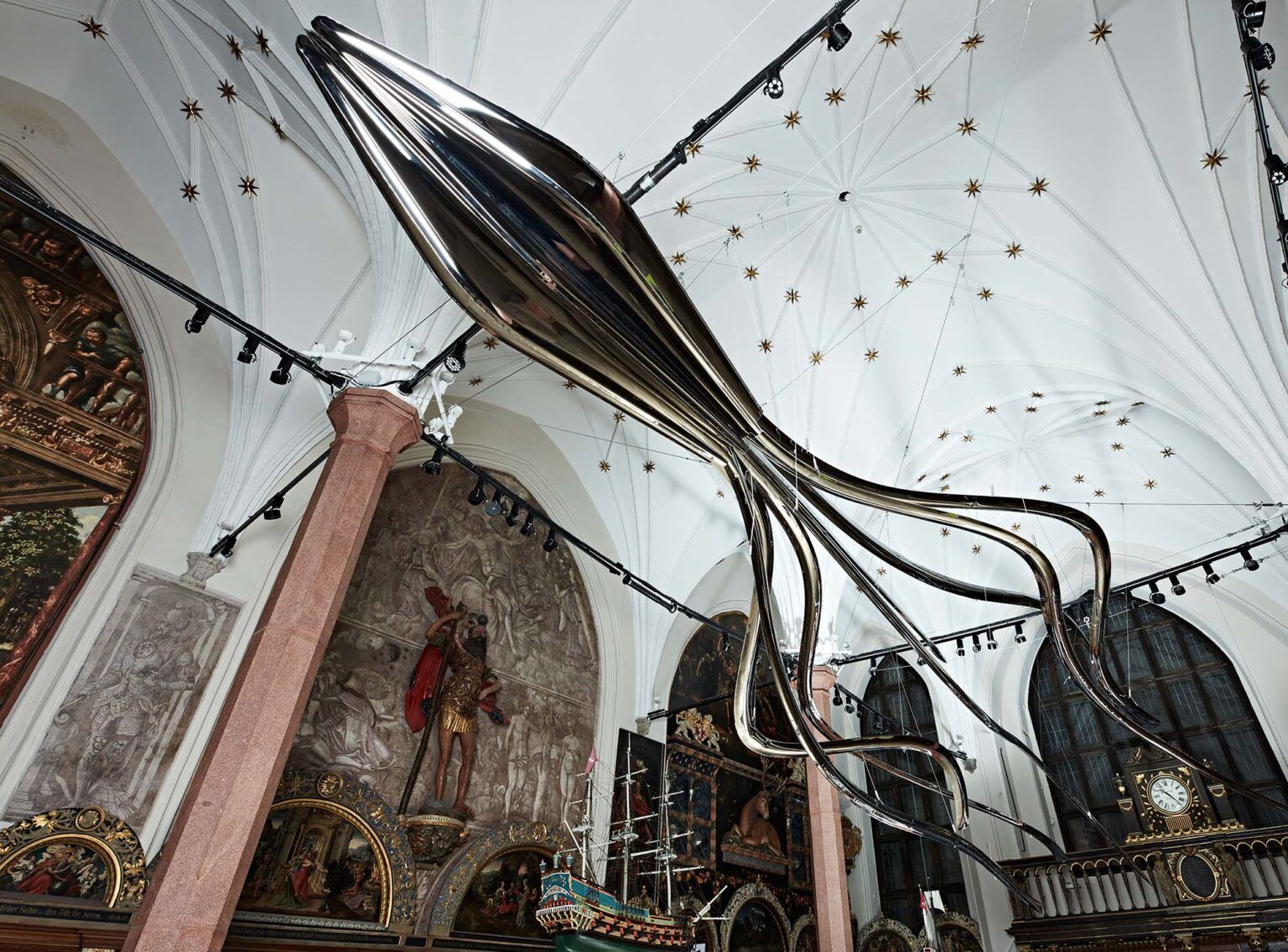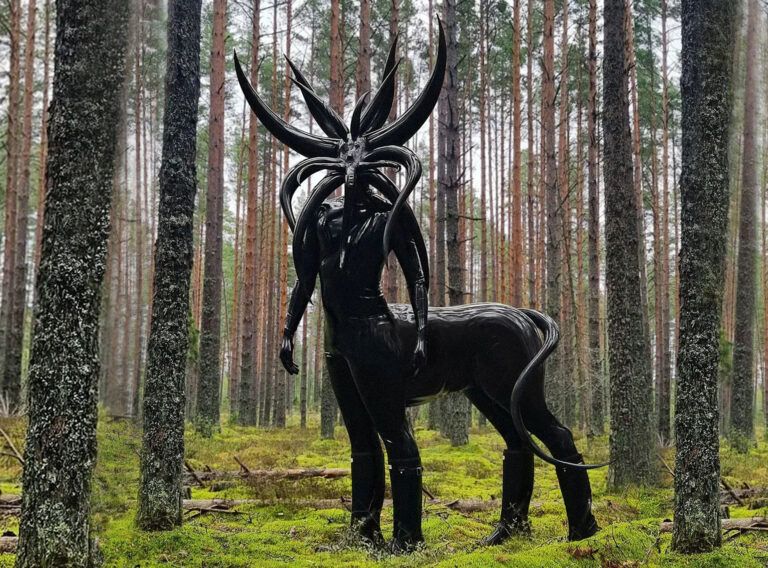Mirrors are magical objects. They represent the present time more than anything by appearing invisible. Do you like that your reflecting objects are disappearing, and their form is becoming almost invisible at some point? Is it part of the whole designing magic?
That’s true. The mirror subject is amazing. There is a lot of magic inside. Our objects become mirrors due to the perfectly polished surface of stainless steel. We like to play with art and design creations. We are happy to take mirrors out of the interior and place them in nature to show how abstract they can be. For some time, we have been experimenting with the matte finish of mirrors and placing them against backgrounds with similar colours, which also results in a sensational game of illusions and we can deceive our perception. The FiDU technology allows us to form steel in a unique way. The world reflected in the mirrors is slightly deformed, and unique images are created on the surface thanks to all the beautiful folds.
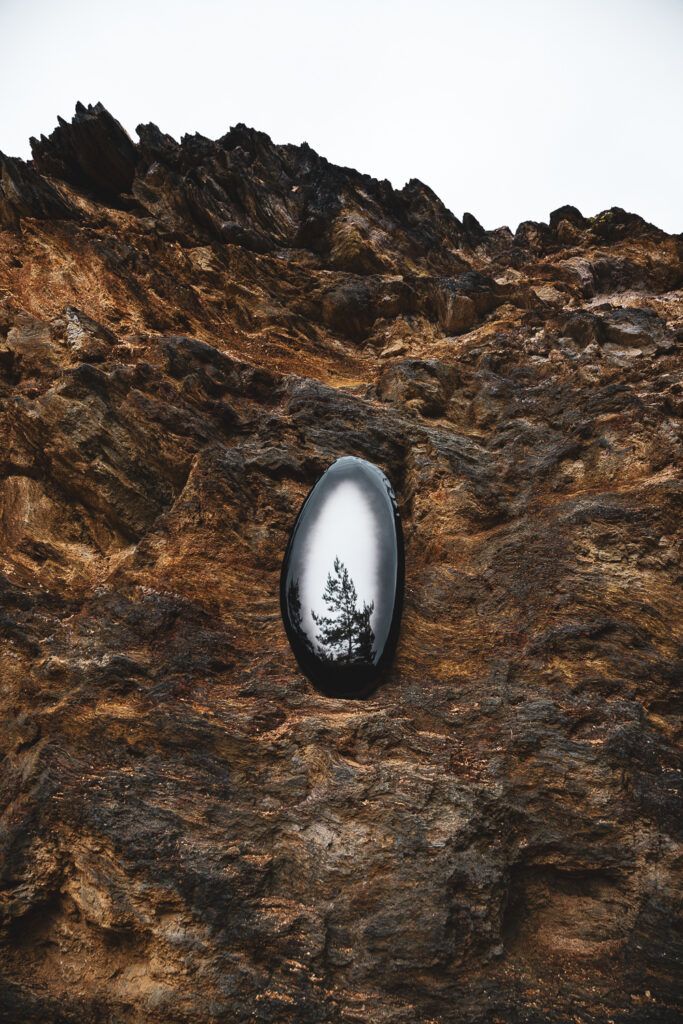
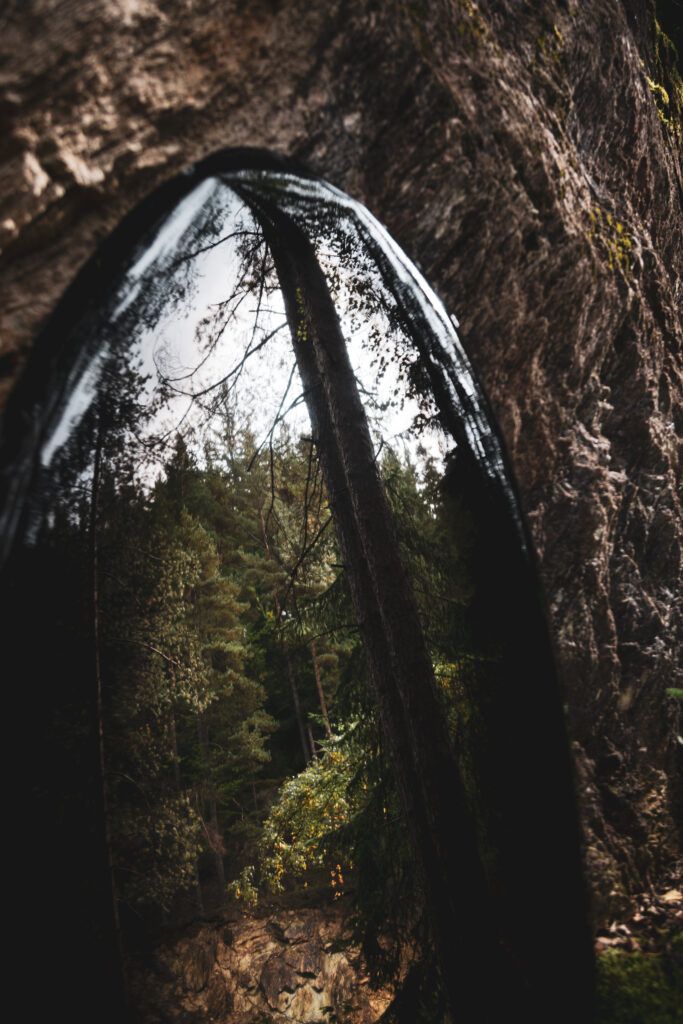
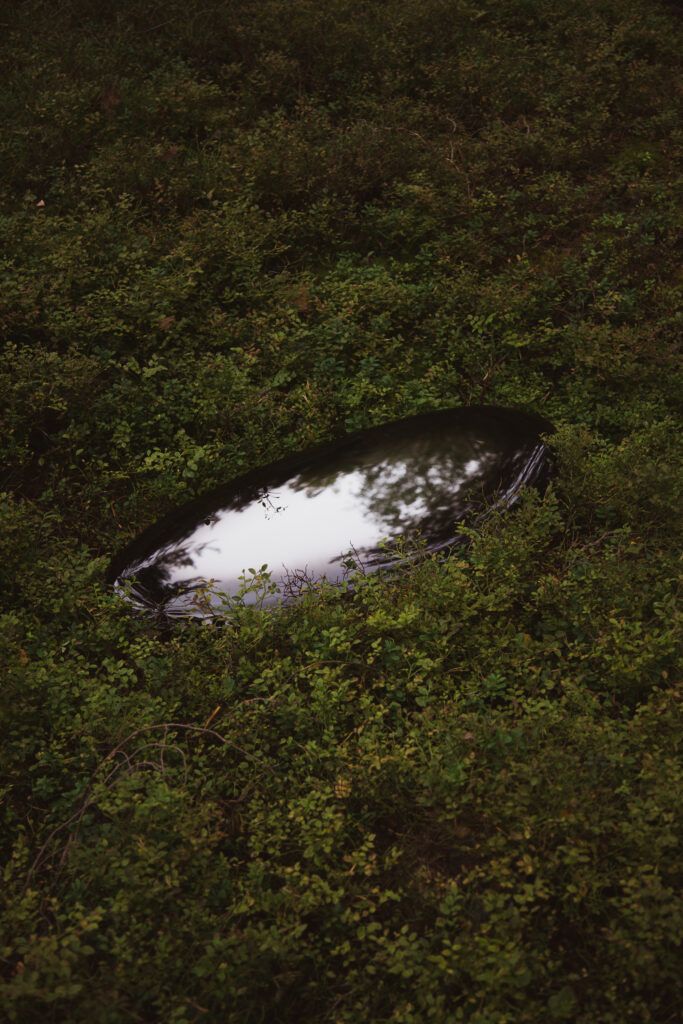
The Kraken is a giant statue floating through space. It almost feels like watching an animal moving in its natural habitat. How hard is it to turn rigid cold metal into such a poetic, elegant, almost living creature?
Firstly, I would like to thank you for these words because this is what we wanted to achieve and it’s nice to hear that we’ve made it. Years of working with steel gave us more freedom and allowed us to gain experience with this material. Several huge sculptures have already been created, such as NAWA in Wrocław or WIR in Warsaw.
The pebble-shaped mirrors/objects TAFLA and Kraken feel like something you might glimpse in the natural world. Do you find inspiration in nature often? Where do you look for organic forms and shapes?
Indeed, nature is my main source of inspiration. I think it is quite easy to notice a multitude of bionic shapes in my work. The shape of TAFLA mirrors refers to the form of a drop or a pebble. The legs of our G table resemble tangled roots. Even the choice of colours often goes back to nature. Out of concern for nature, we introduce more and more solutions that allow us to create sustainable objects.
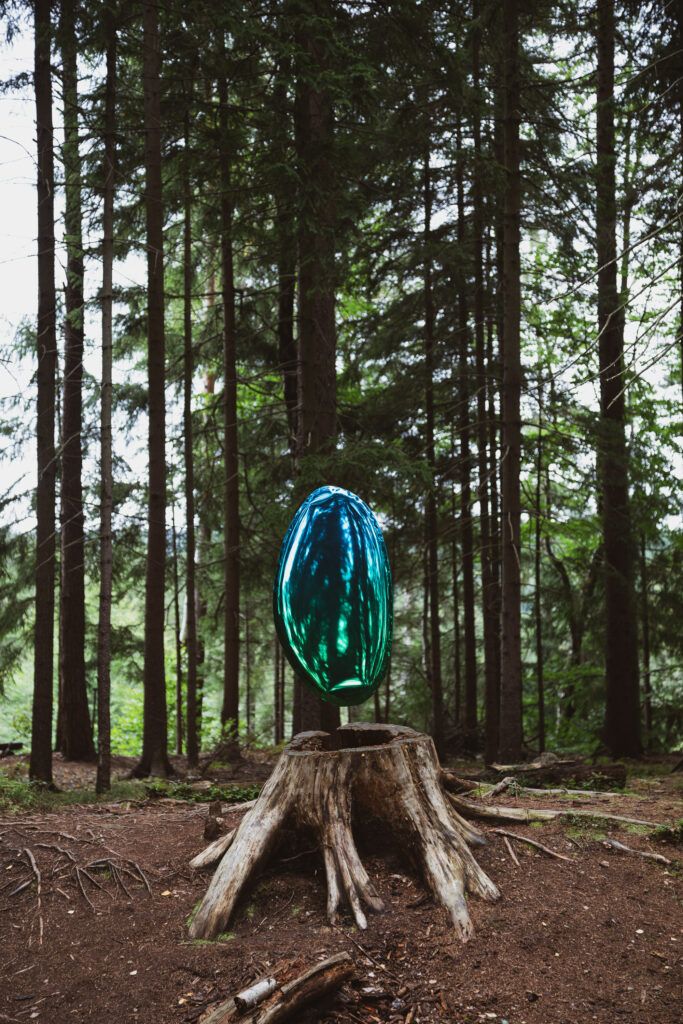

Does the FiDU technology work with the element of surprise or is each edge and angle precisely chosen and calculated?
FiDU, from the German “Freie Innendruck Umformung”, is a method of creating objects on various scales from two-dimensional (2.5) sheets of flat metal welded together using internal pressure. It is based on a free deformation process, known also as volumetric expansion. Moreover, production files required to define the 2.5D form are just a few kilobytes when allowing for a ‘controlled loss of control’. Trying to define the same final form for traditional production methods would require several gigabytes of data.
Since this technology lends itself to spectacular sculpting, do you have plans for more animal-inspired sculptures?
I am constantly inspired by nature in my work. Both fauna and flora. These inspirations are visible in sculptural and utility objects. I don’t want to go far ahead and talk about what will happen but enjoy what is now and give the audience a note of uncertainty while waiting for the news.
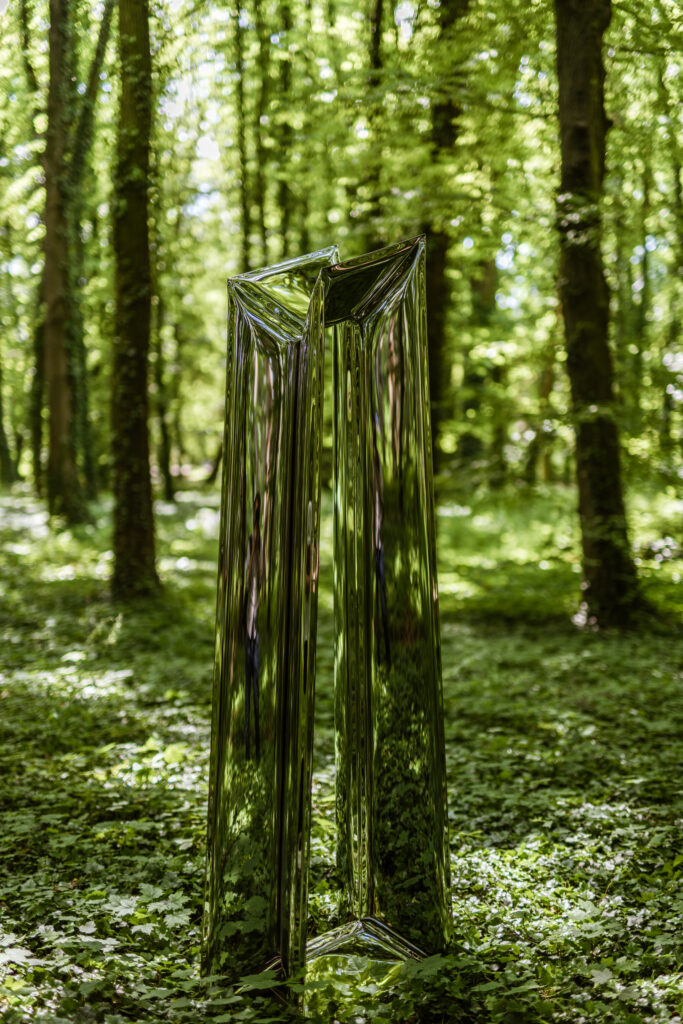

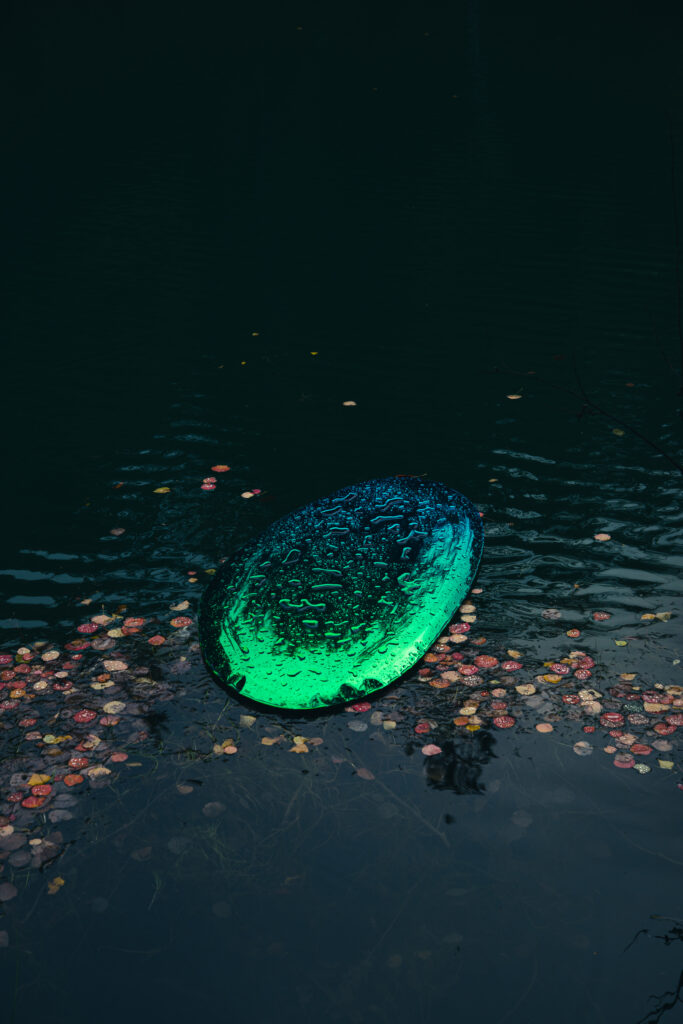
What are the possibilities of the technologies you use for creation and how are they sustainable?
Sustainability, from the very beginning of creating and working with the FiDU technology, was one of the most important issues for me. At the beginning of the development of this technology, I have been faced with quite infamous opinions about our mono-material products while today many companies are considering such solutions due to their easy recycling process.
For me, a sustainable product is one made of recyclable but also durable and long-lasting material whose manufacturing process is easy and efficient. Both Plopp, which I designed in 2007, and one of my latest functional projects, Ultraleggera from 2019, are monomaterial objects that fulfill this concept of eco-friendly design. What’s interesting in my artistic endeavors, though, is also the sustainable potential of steel large-scale constructions, which I apply in the projects of public sculptures such as NAWA or WIR.
Privately, I also try to follow the rules of sustainability by being more aware of what I purchase and what I eat, by cutting the amounts of objects in my life, eliminating everything made of plastic, buying only second-hand iconic design.


